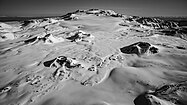Wikipedia:Today's featured article
|
Today's featured article Each day, a summary (roughly 975 characters long) of one of Wikipedia's featured articles (FAs) appears at the top of the Main Page as Today's Featured Article (TFA). The Main Page is viewed about 4.7 million times daily. TFAs are scheduled by the TFA coordinators: Wehwalt, Dank and Gog the Mild. WP:TFAA displays the current month, with easy navigation to other months. If you notice an error in an upcoming TFA summary, please feel free to fix it yourself; if the mistake is in today's or tomorrow's summary, please leave a message at WP:ERRORS so an administrator can fix it. Articles can be nominated for TFA at the TFA requests page, and articles with a date connection within the next year can be suggested at the TFA pending page. Feel free to bring questions and comments to the TFA talk page, and you can ping all the TFA coordinators by adding " |
Featured article candidates (FAC) Today's featured article (TFA):
Featured article tools: |
From today's featured article
Mary Anning (21 May 1799 – 9 March 1847) was an English fossil collector and palaeontologist. She made discoveries of Jurassic marine fossil beds in the cliffs along the English Channel at Lyme Regis, which changed the scientific thinking about prehistoric life and the history of the Earth. Her discoveries included the first correctly identified ichthyosaur skeleton, the first two nearly complete plesiosaur skeletons, and the first pterosaur skeleton outside Germany. Her observations helped prove that coprolites were fossilised faeces and that belemnite fossils contained ink sacs. As a woman, Anning could not join the Geological Society of London and struggled to receive credit for her contributions. Henry De la Beche painted Duria Antiquior based on fossils Anning had found and sold its prints for her benefit. After her death, an article about her life was published in Charles Dickens's literary magazine All the Year Round. A statue of Anning was erected in 2022, and she has been depicted in film and in manga. (Full article...)
From tomorrow's featured article
From the day after tomorrow's featured article
The Mount Edziza volcanic complex (MEVC) is a group of volcanoes and associated lava flows in northwest British Columbia, Canada. Located on the Tahltan Highland, the MEVC has a broad, steep-sided lava plateau; its highest summit is 2,786 metres (9,140 feet). Its volcanoes formed over the last 7.5 million years during five cycles of magmatic activity which spanned four epochs; the most recent eruptions took place in the last 11,000 years. Current activity occurs in the form of hot springs. The MEVC has warm summers and cold, snowy winters; snow and ice remain on the highest peaks year-round. Indigenous peoples have lived adjacent to the MEVC for thousands of years. Historically, the local Tahltan people used volcanic glass from the MEVC to make tools and weaponry. Animal species such as birds, rodents, bears, sheep, goats, moose and caribou inhabit the area. A large provincial park dominates the MEVC, which can only be accessed by aircraft or by a network of footpaths. (Full article...)



